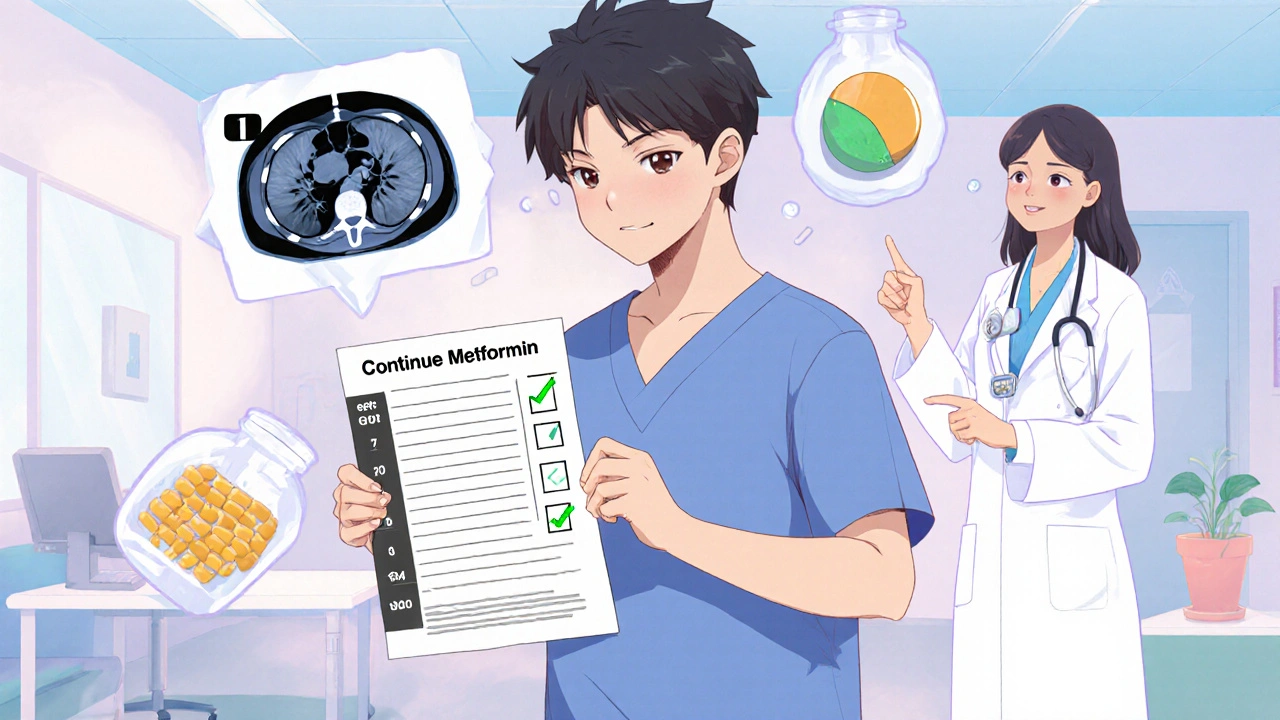Contrast Dye: What It Is, Risks, and What You Need to Know Before Your Scan
When you get an X-ray, CT scan, or MRI, the contrast dye, a special substance used to make internal structures stand out on medical images. Also known as radiopaque dye, it helps doctors spot tumors, blockages, or inflammation that would otherwise be invisible. Without it, many conditions go undetected until they’re serious. But this tool isn’t harmless — it can cause side effects, especially if you have certain health conditions.
Most contrast dyes are based on iodine, a mineral used in X-ray and CT scans to absorb radiation and create clear images. If you’re having an MRI, you might get a gadolinium-based agent, a different type of dye that enhances magnetic signals in soft tissues. Both types work well, but they carry different risks. Iodine contrast can harm your kidneys if you already have kidney disease — a problem that affects up to 1 in 10 older adults or people with diabetes. Gadolinium, while safer for kidneys, has been linked to rare but serious skin and tissue reactions in people with severe kidney failure.
Some people react badly to contrast dye — not because they’re allergic to it, but because their body overreacts to the chemical stress. Symptoms like nausea, flushing, or itching are common and usually mild. But in rare cases, people develop trouble breathing, swelling, or a dangerous drop in blood pressure. If you’ve had a reaction before, tell your doctor. They can pre-treat you with steroids or antihistamines to lower the risk. And if you’re on metformin for diabetes, you might need to pause it before and after the scan — it’s a simple step that prevents a rare but serious complication called lactic acidosis.
There’s no one-size-fits-all answer to whether contrast dye is right for you. Your age, kidney function, medications, and past reactions all matter. That’s why so many people are asking questions online: Is it safe if I’m on blood pressure meds? Can I drink coffee before the scan? What if I’m pregnant? The posts below answer these real questions — not with guesswork, but with clear, evidence-based advice from people who’ve been there. You’ll find guides on how to prepare, what to watch for after the scan, and how to talk to your doctor about safer alternatives. Whether you’re worried about kidney damage, an allergic reaction, or just want to know what’s really in that IV drip, you’ll find practical steps to protect yourself.

Metformin and Contrast Dye: What You Need to Know About Lactic Acidosis and Kidney Risk
Nov 13, 2025, Posted by Mike Clayton
Learn the current guidelines on taking metformin with contrast dye. Understand when to stop or continue the medication to avoid rare but serious lactic acidosis risks tied to kidney function.
MORESEARCH HERE
Categories
TAGS
- treatment
- online pharmacy
- dietary supplement
- side effects
- health
- dietary supplements
- health benefits
- online pharmacy Australia
- thyroid disorders
- treatment option
- calcipotriol
- blood pressure
- erectile dysfunction
- closer look
- optimal health
- sexual health
- bacterial infections
- nutrition
- dosage
- antibiotics 2025
